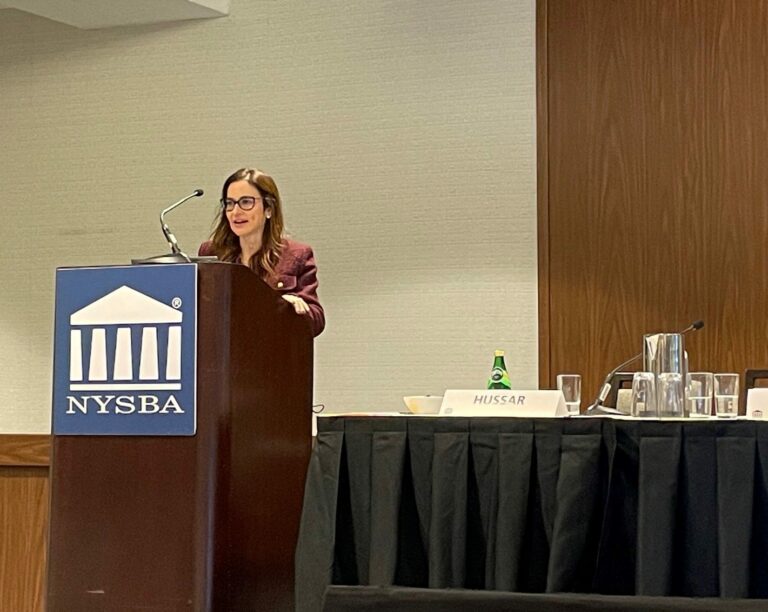Telehealth Regulations Change in a Post-Pandemic World
1.17.2024

As the COVID-19 pandemic made digital and telehealth services necessary, governments eased regulations for access. Now that the crisis is over, regulations are returning, and states are reexamining their procedures.
Randi Seigel, health care partner at Manatt, Phelps & Phillips, briskly examined the past, present and future of telehealth regulations at a meeting of the Health Law Section during the New York State Bar Association’s Annual Meeting.
“There was a dramatic uptick in telehealth at the start of the pandemic and through the 12 months that followed purely out of necessity,” said Seigel. “The federal and state government took rapid action to ease the myriad of regulatory burdens on providers that prevented telehealth from being readily accessible.”
Many patients, especially those in rural areas, prefer telehealth services and have continued to use them as the pandemic has receded. But the rules have changed since then. During the pandemic, it was permissible for doctors to communicate with their patients on technologies without privacy protections, such as FaceTime, but that is no longer the case.
Online Questionnaires
In the coming year, Seigel said to look for how states are regulating the use of online questionnaires in telehealth. “We’re seeing some states actually embrace the use of online questionnaires and say they count as telehealth if there was a prior, preexisting relationship with the patient,” said Seigel. “But other states have made it clear the use of online questionnaires or automatic chatbots are not considered telehealth.”
Seigel said that states have differentiated online questionnaires from traditional “store and forward” communications, in which a person sends additional medical information, like a photo of a rash or a medical record, for a medical provider to look at and make decisions.
“I think in some ways, it’s really helping patients get access to medications at lower costs and there’s some low risk,” said Seigel. “But we’ve also seen there’s a proliferation of prescribing opioids, controlled substances, potentially weight-loss drugs – that are raising concerns around the use of this online questionnaire. I think there’s going to be a lot of activity here – either at the state regulatory level or by the boards of medicine, who may take action if the state doesn’t pass something.”
License To Practice Remotely
Many states have a regulation that the medical professional providing telehealth services must be licensed in the state where their patient is located – a requirement that was waived during the pandemic. “However, almost all of the states have now lifted these temporary flexibilities and are exploring new policies that that seek to expand or streamline the state licensure process for physicians,” said Seigel.
Furthermore, state law is often unclear about how nurse practitioners and assistant physicians can practice telehealth. “We’re sort of left to guess and interpret the rules because most of those rules haven’t been updated with the growth of telehealth.”
There are pathways for physicians and nurses to gain licenses in other states through agreements like the Interstate Medical Licensure Compact and the Nurse Licensure Compact. Bills for New York to join these agreements have been introduced in the state legislature.
Telehealth providers may also face additional requirements when prescribing certain medications, such as controlled substances and abortion pills.
“With any growth of a certain type of service, you can expect government oversight,” said Seigel. “Here, we’re seeing federal activity around telehealth, and looking at telehealth utilization and studying its impact on the quality of care.”






